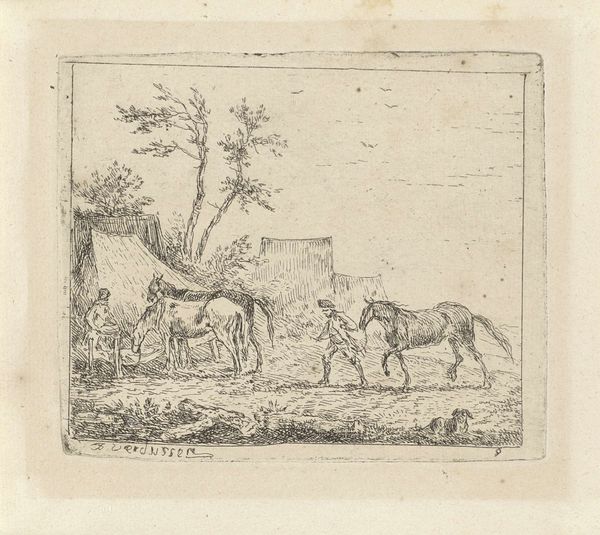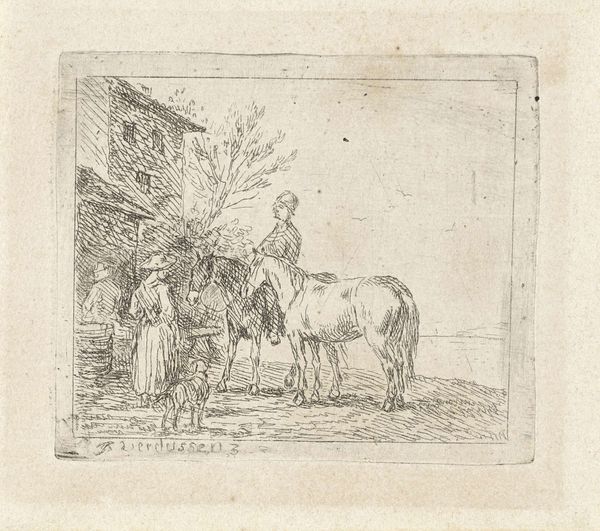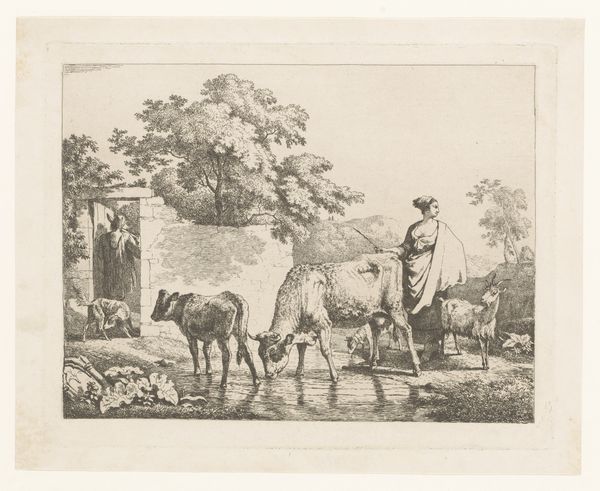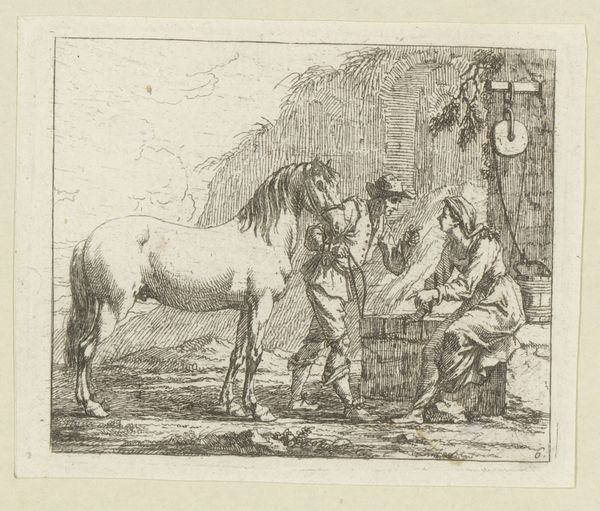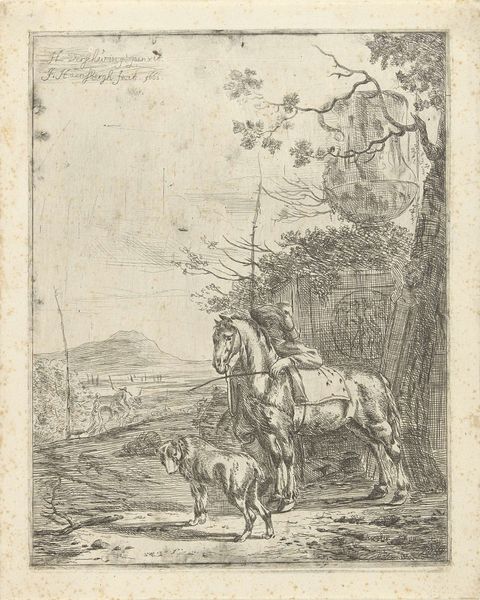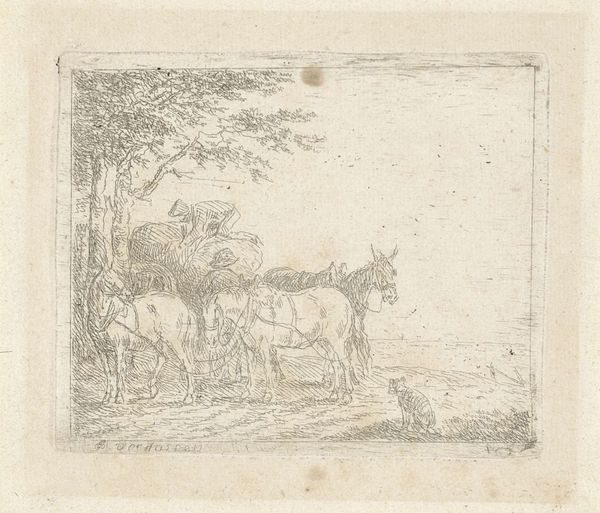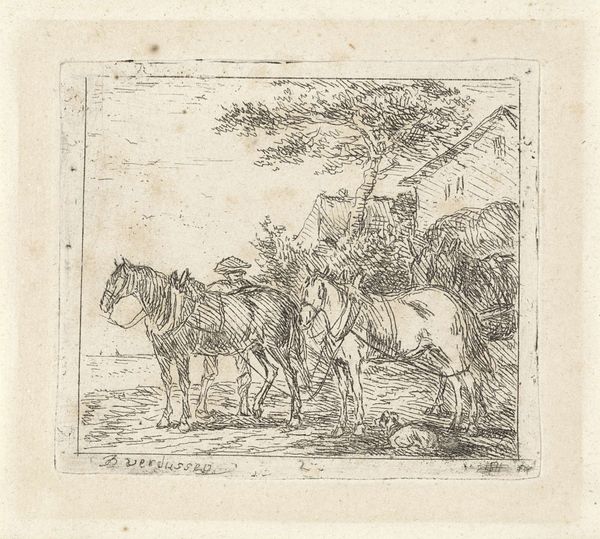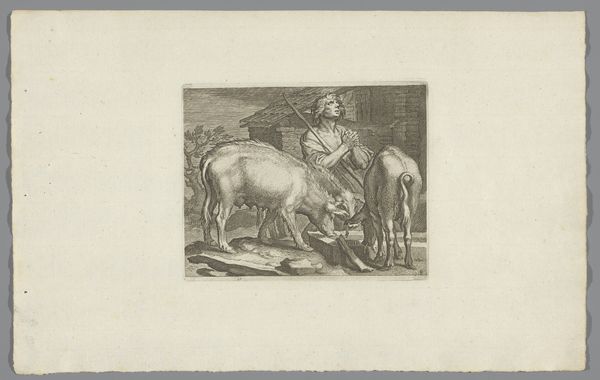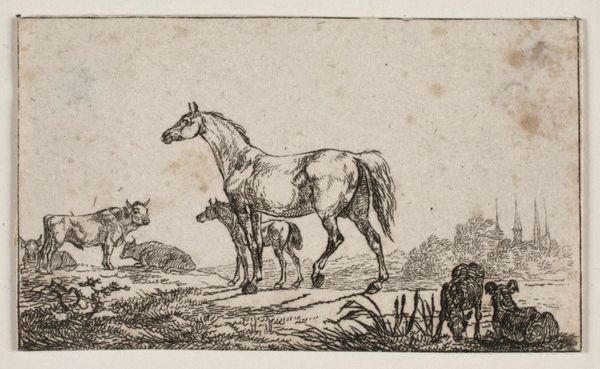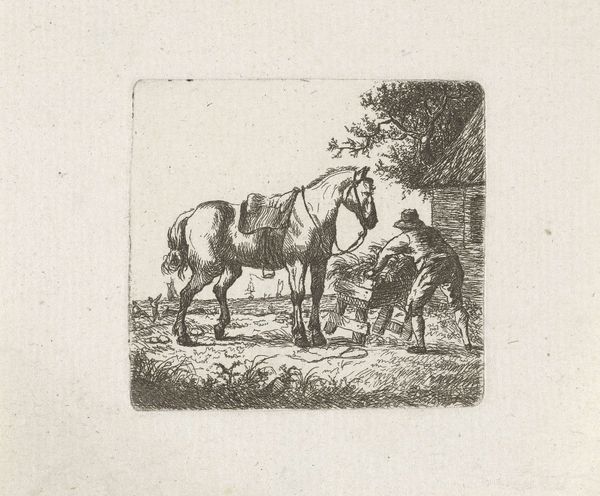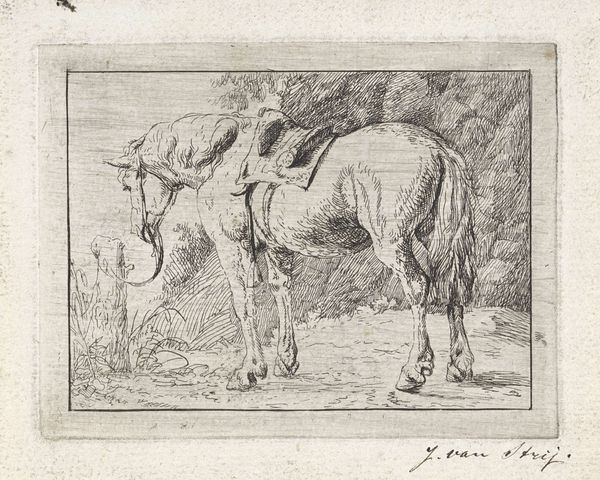
drawing, print, etching, engraving
#
drawing
#
baroque
# print
#
etching
#
landscape
#
genre-painting
#
engraving
Dimensions: height 98 mm, width 116 mm
Copyright: Rijks Museum: Open Domain
Curator: This is "Horses in a Stable," an etching by Jan Peeter Verdussen, dating from around 1710 to 1763. The print depicts horses inside what looks like a stable, with a dog standing nearby. The details feel quite raw because it’s made using the etching technique. Editor: Yes, the roughness created by the etched lines definitely jumps out. How would you analyze Verdussen's piece through a Materialist lens, considering its materials and production? Curator: Right, we should start with the economic context that made this kind of etching, its availability, and the skills required to create it. Etching allowed for relatively mass production compared to painting, making art more accessible, so this image can be examined through the lenses of labor and consumption. The materiality of ink, paper, and the etching plate, coupled with Verdussen's labor, brought this scene into existence for wider distribution. How does seeing the piece as a product change your understanding of it? Editor: It makes me think about the role of stables and horses in society at the time, beyond just aesthetics. If these prints were widely available, what message was Verdussen trying to convey about labor? Is the composition somehow connected with it? Curator: Exactly. Think about who owned horses, who worked with them, and the economic activity around them. This scene then represents a specific segment of society that the intended audience may be quite distant from, maybe providing a glimpse into the lives of those involved in agriculture or transportation. Also, do you think the roughness itself reflects on the represented social classes? Editor: Perhaps it downplays the luxury, emphasizing the ruggedness of their work. Thanks, it's really helpful to view art by considering the conditions of its creation. Curator: Indeed! Focusing on materiality encourages us to think about art as embedded within specific production networks and the daily lives of the people represented in it. It changes your view.
Comments
No comments
Be the first to comment and join the conversation on the ultimate creative platform.
